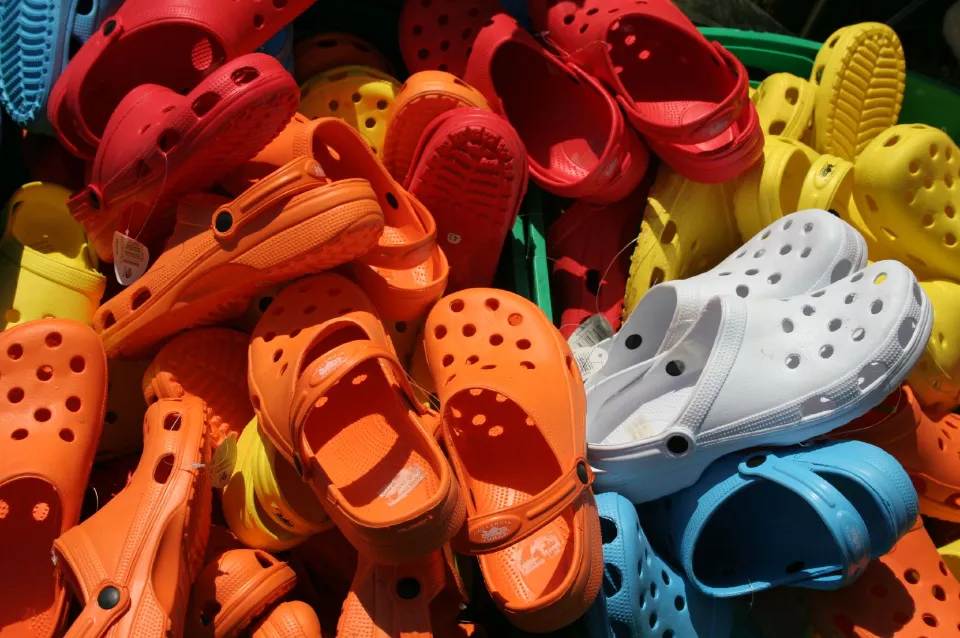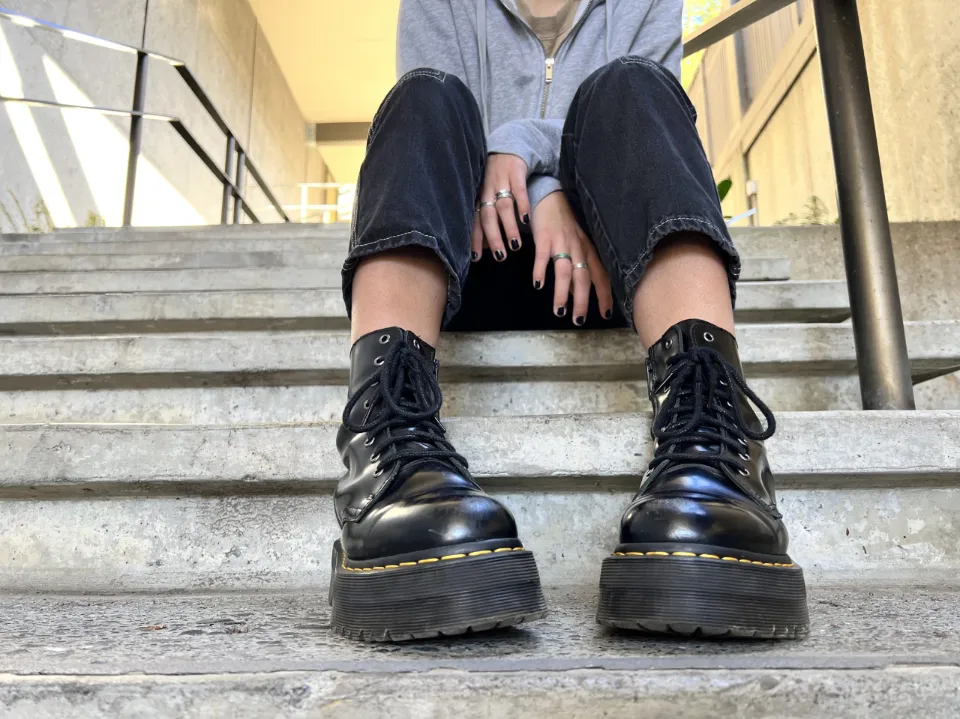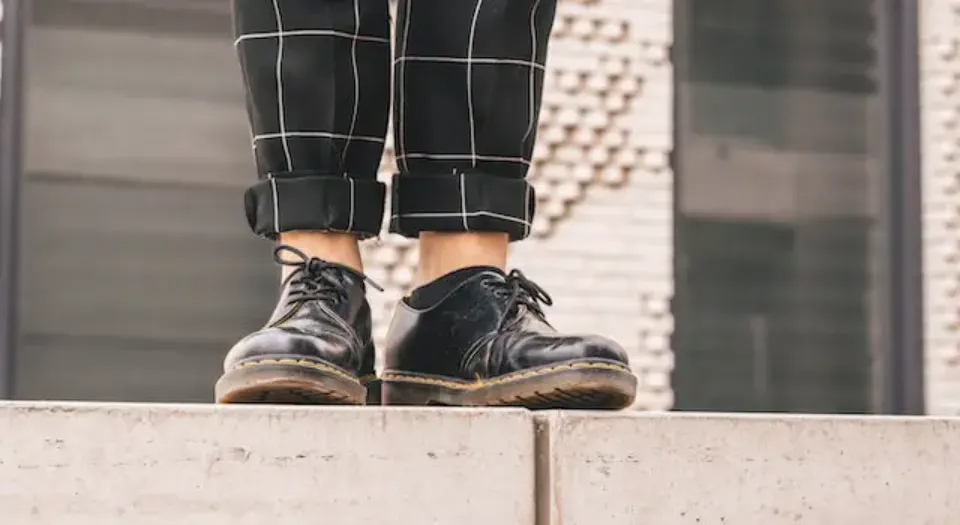Crocs and Crocs shoes have probably caught your eye or ear. But do you know what are Crocs made of?
The lightweight footwear brands are made from the closed-cell resin called Croslite. There are crude oil polymers in croslite. Therefore, crude oil rather than rubber or plastic is used to make Crocs.
Do you, however, know any more in-depth information about it? Let’s dive into some Crocs facts to find out if they are eco-friendly.
What Are Crocs Made Of?
Crocs are uniquely crafted footwear made of a lightweight, comfortable material called Croslite.
In order to provide a non-toxic, odor-resistant, and bacterial-resistant option for outdoor use, this proprietary closed-cell resin uses polymers made from crude oil.
This material’s softness offers unmatched comfort, unlike rubber and plastic. The material has a wide range of uses, is simple to clean with soap and water, and requires little upkeep.
These characteristics make Crocs the ideal option for comfortable yet sturdy footwear.
Related Reading: Where Are Crocs Made?
What Are the Advantages of Croslite?

Now that we have understood the Croslite material, let’s look at its advantages.
- Croslite material is extremely lightweight, making the The wearability of Crocs is outstanding.
- In order to protect against rain or water splashes, this unique material is waterproof.
- Crosalite material is shock resistant as well.
- All day long, your feet stay fresh and clean thanks to its antibacterial and odor-resistant qualities.
- Your crocs will last longer thanks to the UV-resistance property of the Croslite material.
What Are the Disadvantages of Croslite?
Despite having many advantages, Croslite material does have some disadvantages as well.
- Crocs are less breathable than other types of shoes due to the resin material called croslite, which traps heat and moisture.
- The disadvantage of its softness is that, if stepped on by something sharp and dangerous, like metal or glass, it can easily cut through shoe soles. This may result in injuries to the foot or lower leg.
- Your Crocs may occasionally emit a disagreeable odor. The absence of socks, which are used to absorb sweat, may be the cause of this offensive odor.
- Material made of croslite can be recycled. Consequently, it is bad for the environment.
Are Crocs Eco-friendly?
Crocs are not eco-friendly. The product may have a negative impact on the environment. Crocs are made from a foam resin material known as Croslite. Chemical plastic components can be found in croslite.
Old Crocs should therefore never be carelessly dumped into the environment. Recycling them is also not possible due to the effects of the same Croslite.
Apart from the effects of Croslite, Crocs have other unique materials that don’t break down quickly when taken to a landfill. When at the landfills, crocs are susceptible to being swept away by floods or even strong winds and ending up in the water.
Toxic substance releases have an impact on aquatic organisms as well. Finally, it will have an impact on aquatic animals.
If a straightforward response is all you require, Crocs are not eco-friendly.
Also Read:
How to Differentiate Between Fake Crocs and Original Crocs?
Many Crocs analogs have been developed, but according to those who have used original The awesomeness of Crocs cannot be matched by any substitute.
The reason is simple; original Crocs are made from a unique Croslite material that is professionally blended.
How can the original Crocs be distinguished from those with limited support if this is your first time purchasing them?
Without taking into account the cost—the real Crocs may be a bit pricey—there are seven significant distinctions between authentic and counterfeit Crocs.
Signs of Original Crocs
- The logo on the exterior of Original Crocs is precise and shiny. The Crocs logo button is a sticker on counterfeit products.
- The Crocs Company provides the purchaser of the original Crocs with a branded hanger bearing the company’s logo.
- The labels on genuine Crocs include information on the size, model, material used, and other factors.
- Right in the middle of the original Crocs’ sole is an intricately designed Crocs logo. In addition to the size information, the original Crocs manufacturers include the web link that leads to their official website (www.Crocs.com)
- Opposite the website’s address on the original Crocs are the words written as “boulder, colorado.” Always remember that there is a comma, not a full stop, between the two words. The terms are typically located at the sole.
- The packaging for genuine Crocs is a branded bag rather than a cardboard box. The brand-named bag is either transparent or white.
- The Crocs shouldn’t sweat or chafe when you put them on for the final time. Eventually, they’ll take the shape of your feet.
Knowing the Fake Crocs
- They are of low quality due to fake material used
- The label of “boulder, colorado” is absent.”
Well, those are the fundamentals you must comprehend in order to tell authentic Crocs from knockoffs.
Conclusion: What Are Crocs Made Of
In conclusion, the Croslite foam resin material that makes up Crocs is used in their construction. They are lightweight, waterproof, and provide the greatest comfort and protection thanks to the Croslite material.
This unique material does have some disadvantages, though, as it is difficult to recycle and traps heat and moisture.
If they are not disposed of properly, Crocs footwear can be harmful to the environment.
Therefore, it’s crucial to use Crocs sensibly and properly dispose of them once they’re no longer necessary.
FAQs
Are Crocs Made of Rubber?
The material used to make Crocs shoes is called Croslite, which is neither plastic nor rubber but rather a resin.
Are Crocs Made from Recycled Material?
45% of the scrap used to make their croslite is recycled, according to their website.
Are Crocs Made of Crocodile Skin?
In fact, a material called Croslite is used to make Crocs. This substance is breathable, cozy, and long-lasting.




